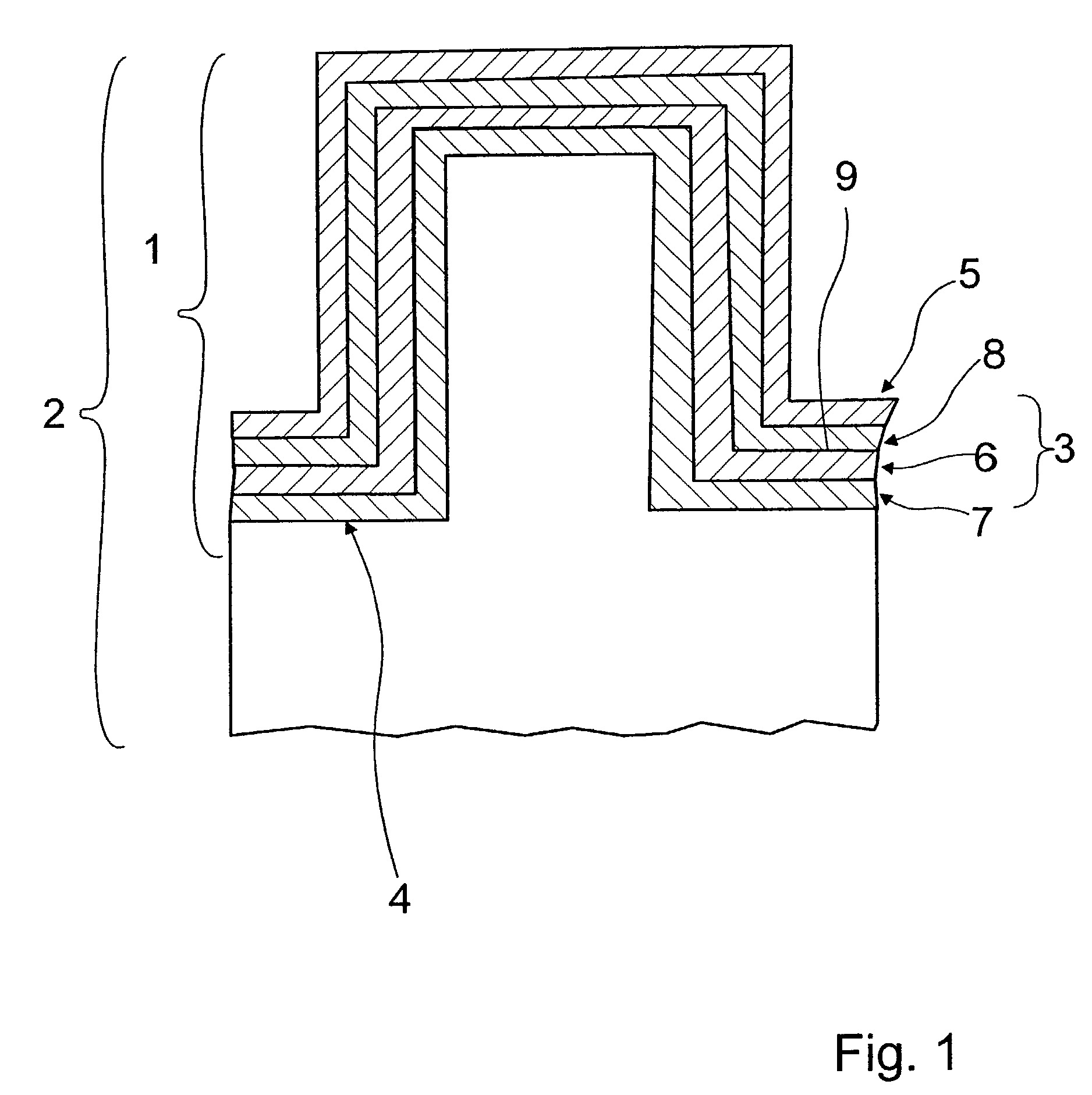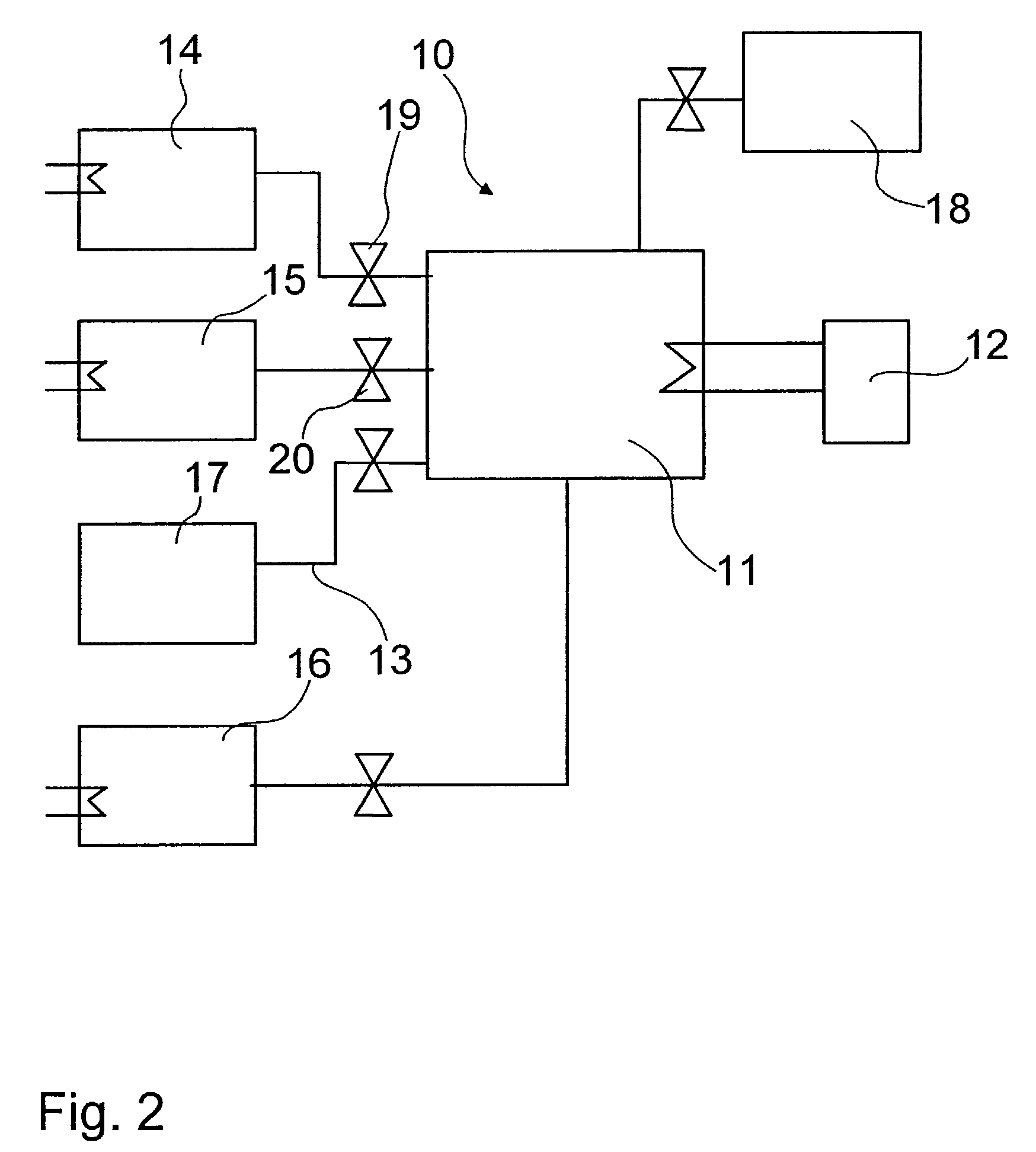Micromechanical component and method for producing an anti-adhesive layer on a micromechanical component
a micromechanical component and anti-adhesive technology, applied in the direction of superimposed coating process, natural mineral layered products, transportation and packaging, etc., can solve the problems of high temperature oxidative or thermolytic damage of coatings, high mechanical and thermal stress resistance, etc., to achieve the effect of reducing mechanical and thermal load capacity, and reducing mechanical and thermal stress
- Summary
- Abstract
- Description
- Claims
- Application Information
AI Technical Summary
Benefits of technology
Problems solved by technology
Method used
Image
Examples
exemplary embodiment b
[0059]Components 2 to be coated were cleaned using an oxygen plasma treatment, which may be for 5 minutes at 350 W and 1 torr, and were then introduced into chamber 11 of coating system 10. Chamber 11 was evacuated to a pressure of less than 10−4 mbar at a substrate temperature of 55° C. Steam at a water vapor partial pressure of 8 mbar was then introduced, over a period of 3 minutes at a substrate temperature of 55° C., to increase the density of the necessary OH groups on the surface of the components to be coated.
[0060]Chamber 11 was then evacuated to a pressure of 10−4 mbar at a substrate temperature of 55° C. This was followed by a first 10-minute coating phase using tetrachlorosilane at a partial pressure of the coating agent of 8 mbar and a substrate temperature of 55° C.
[0061]After the first coating phase was completed, chamber 11 was evacuated to a pressure of less than 10−4 mbar at a substrate temperature of 55° C. The applied layer was then completely hydrolyzed with stea...
PUM
| Property | Measurement | Unit |
|---|---|---|
| thickness | aaaaa | aaaaa |
| thickness | aaaaa | aaaaa |
| thickness | aaaaa | aaaaa |
Abstract
Description
Claims
Application Information
 Login to View More
Login to View More - R&D
- Intellectual Property
- Life Sciences
- Materials
- Tech Scout
- Unparalleled Data Quality
- Higher Quality Content
- 60% Fewer Hallucinations
Browse by: Latest US Patents, China's latest patents, Technical Efficacy Thesaurus, Application Domain, Technology Topic, Popular Technical Reports.
© 2025 PatSnap. All rights reserved.Legal|Privacy policy|Modern Slavery Act Transparency Statement|Sitemap|About US| Contact US: help@patsnap.com


